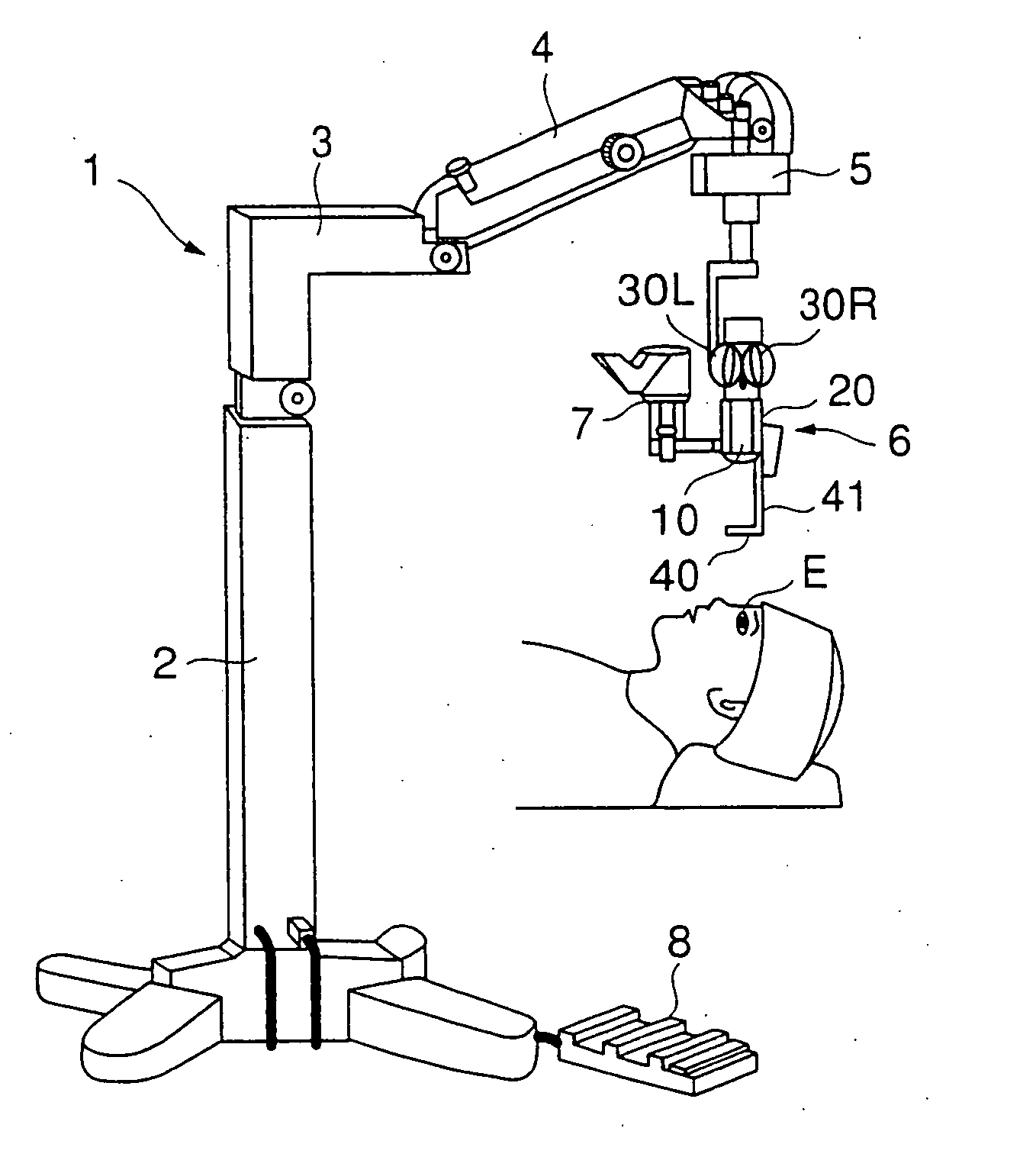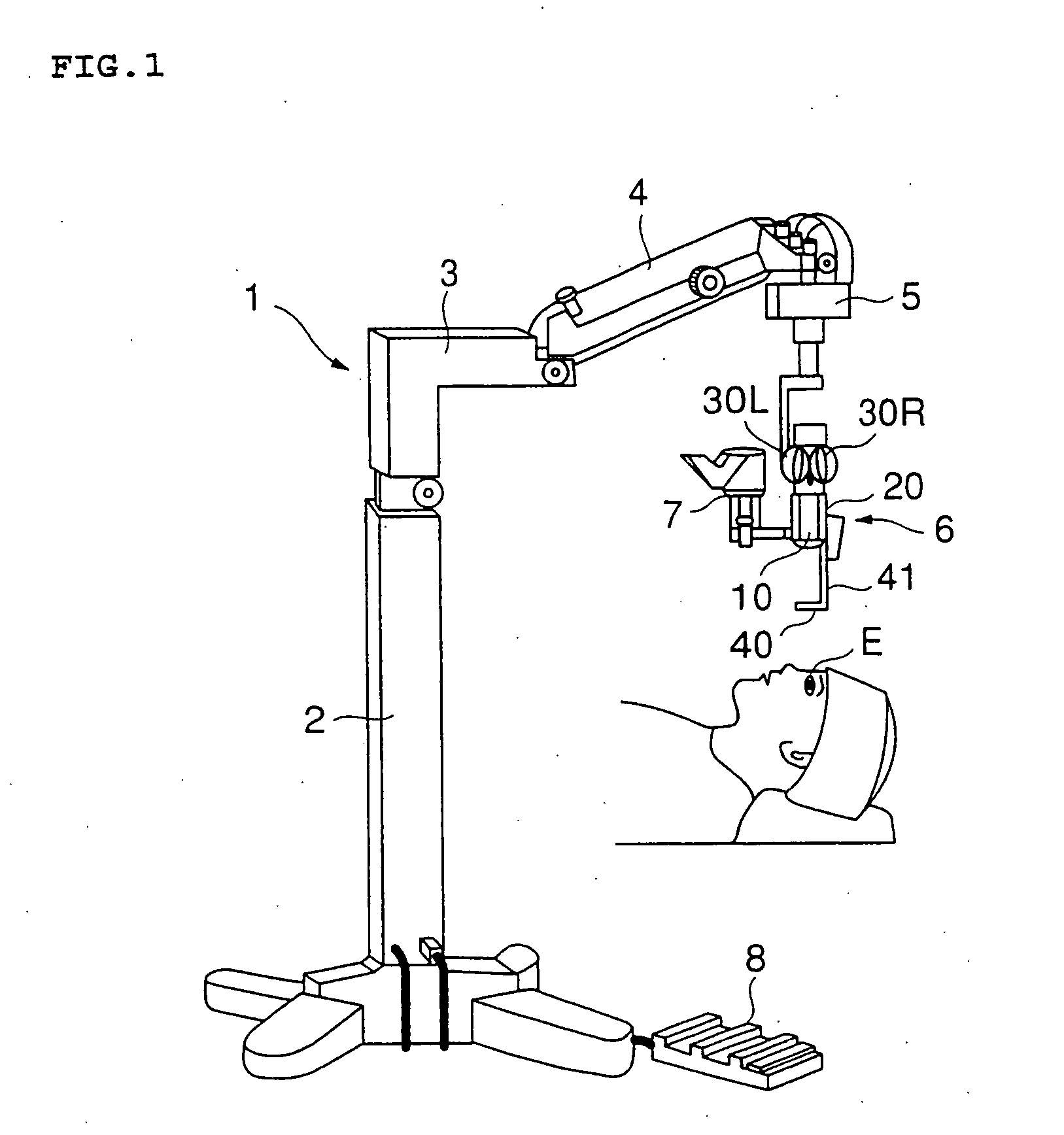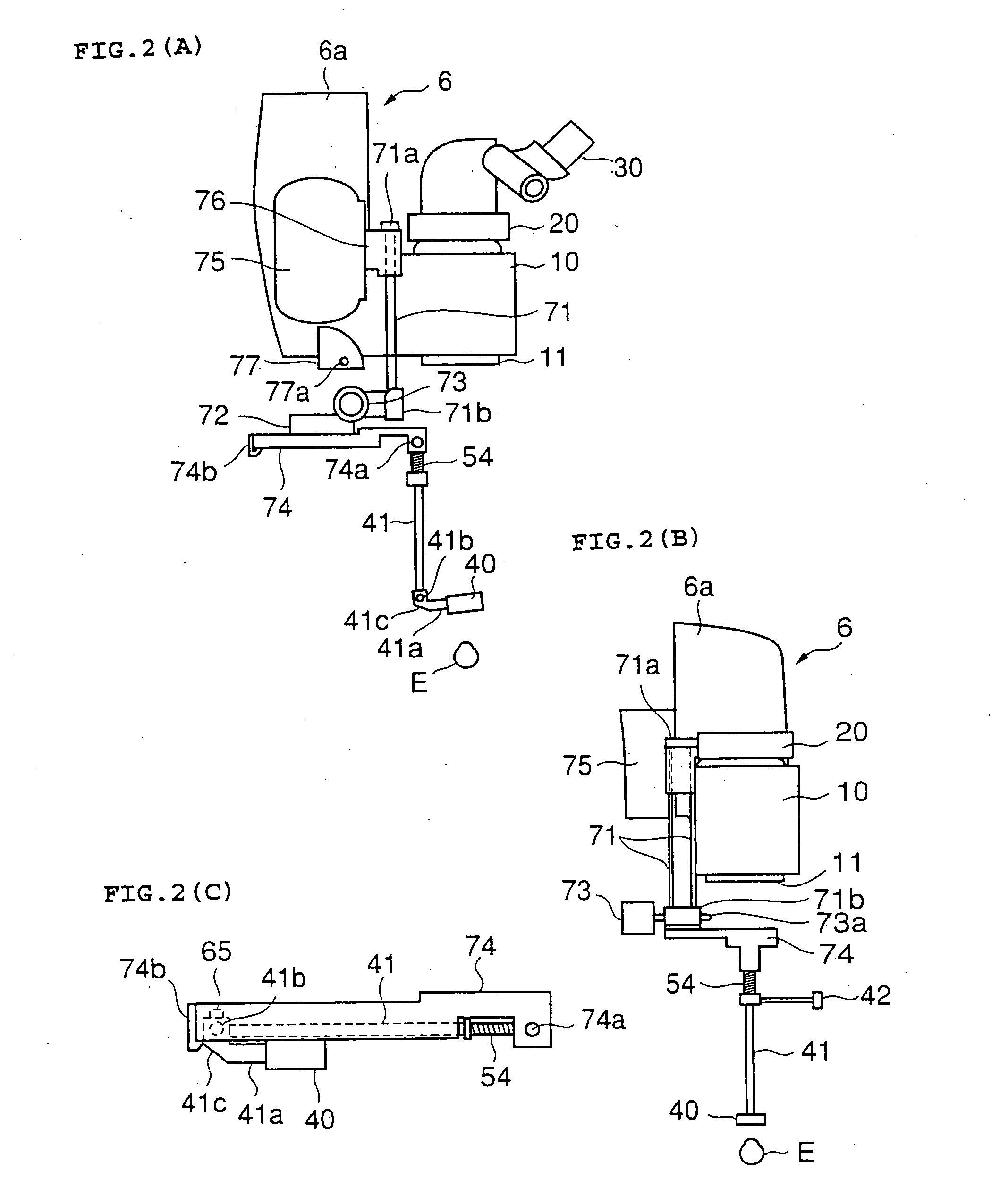Ophthalmologic operation microscope
a technology of operation microscope and ophthalmology, which is applied in the field of ophthalmology, can solve the problems of deficiency of visual field of the operator and difficulty in observing the portions around the same, and achieve the effect of satisfying the visual field
- Summary
- Abstract
- Description
- Claims
- Application Information
AI Technical Summary
Benefits of technology
Problems solved by technology
Method used
Image
Examples
first embodiment
[0035] [General Construction of an Ophthalmologic Operation Microscope]
[0036]FIG. 1 shows the general construction of an ophthalmologic operation microscope 1 according to the first embodiment. This ophthalmologic operation microscope 1 is equipped with a column 2 for supporting the apparatus, a first arm 3 one end of which is connected to the upper end of the column 2, a second arm 4 one end of which is connected to the other end of the first arm 3, a drive device 5 connected to the other end of the second arm 4, an operator microscope 6 suspended from the drive device 5, an assistant microscope 7 disposed adjacent to the operator microscope 6, and a foot switch 8 for performing various operations with a foot. The operator microscope 6 and the assistant microscope 7 are driven three-dimensionally, i.e., vertically and horizontally, by the drive device S. Symbol E indicates an eye of the patient who is subjected to operation. Numeral 40 indicates a front lens disposed between the ob...
second embodiment
[0081] Next, another embodiment of the present invention will be described. This embodiment differs from the first embodiment in the construction for inclining the front lens. In the following description, the components that are the same as those of the first embodiment will be indicated by the same reference numerals. FIGS. 10A and 10B schematically show the construction of a part of the ophthalmologic operation microscope of this embodiment.
[0082]FIG. 10A shows the front lens 40 in the state of use. The ophthalmologic operation microscope of this embodiment is characterized by the construction of the accommodating portion 74 and the connection portion connected with the coil spring 54. The accommodating portion 74 and the coil spring 54 are rotatably connected by an axle 74a. By swinging the retaining arm 41, switching between use and non-use of the front lens 40 is effected. The portion where the accommodating portion 74 and the coil spring 54 are connected with each other is f...
third embodiment
[0084] While in the first and second embodiments described above the front lens 40, which is inclined, is arranged above the horizontal line, it is also possible to obtain the same effect as that of the first and second embodiments by inclining the front lens 40 so as to be situated below the horizontal line 1 as shown in FIG. 1A.
[0085] The third embodiment will be described in more detail. As indicated by the chain line in FIG. 11A, in the first and second embodiments, the front lens 40 is inclined so as to be situated above the horizontal line 1, which is at the level of the axle 41b (that is, such that the angle θ1 made by the retaining arm 41 (or observation axis) and the retaining plate 41a is an acute angle). In this embodiment, in contrast, the front lens 40′, indicated by the solid line, is rotated in the direction of the arrow Y so as to be situated below the horizontal line 1 (that is, such that the angle θ2 made by the retaining arm 41 (or observation axis) and the retai...
PUM
 Login to View More
Login to View More Abstract
Description
Claims
Application Information
 Login to View More
Login to View More - R&D
- Intellectual Property
- Life Sciences
- Materials
- Tech Scout
- Unparalleled Data Quality
- Higher Quality Content
- 60% Fewer Hallucinations
Browse by: Latest US Patents, China's latest patents, Technical Efficacy Thesaurus, Application Domain, Technology Topic, Popular Technical Reports.
© 2025 PatSnap. All rights reserved.Legal|Privacy policy|Modern Slavery Act Transparency Statement|Sitemap|About US| Contact US: help@patsnap.com



